
Living with dogs, particularly a new puppy, teaches you rapidly how quickly your house becomes one giant chew toy and how much, uh, mess (don’t judge) is left in every room. A inquisitive dog won’t take long to find socks and rubbish beneath the couch—oh, and look at all those interesting cords plugged in all over the place! A veritable gold mine for our dogs, who also happen to be highly dangerous.
Your house has additional opportunities to dog-proof each room. There are some unexpected dangers everywhere, from the living room and bedroom to the kitchen and laundry area. However, be at ease! Making small changes to your furnishings and décor can provide your dog plenty of comfortable space to unwind in.
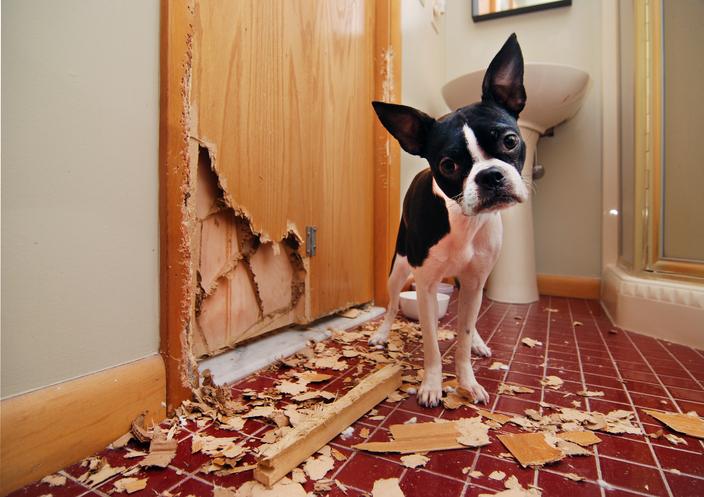
Dogs are fluffy danger vacuums on four legs because they use their noses and mouths to explore their surroundings. You are more likely to see things that could unintentionally endanger your best buddy, a dog, if you literally consider things from their perspective.
I always advise considering your dog’s perspective when assessing a room in your house for safety; what is their height and where is their line of sight? You can find dangerous items that might catch your dog’s attention by evaluating your house from their height. You may be shocked to learn that your golden retriever can easily take your brand-new watch since it is perched just right on your bedside table. Little things that are easily accessible should be taken out and stored in secure places where your dog cannot get to them, like closets or drawers.
Your end table, your bed, and your rocking rocker. If your dog is a good climber and can jump up on things quickly, you might want to remove any potentially dangerous furnishings. Jump-activated chairs have the potential to hurt your dog as well as injury other objects in your house when they swing back. Dogs who follow their noses and will put their paws up on furniture might quickly become distracted by end tables with glass picture frames or breakable family treasures.
Does your dog enjoy a nice, cozy couch spot? Is he more comfortable curled up on a blanket? Dog proofing your house requires careful consideration of where those things should be placed. Never put blankets, dog beds, or rugs next to heaters, fireplaces, fans, or electrical cords or outlets since they can easily become harmful.
The kitchen, bathroom, and laundry rooms are typically the riskiest rooms in your house, but you should spend time in every room since they can all be dangerous. To help divide up spaces or keep your dog out of areas you don’t want them to enter, get some strong baby gates. Your dog will have lots of wonderful spots to rest and unwind once you’ve made these sections of your house safe.
There are a lot of things in kitchens that aren’t dog friendly, like food, medicine, and cleaning materials. Your dog has the greatest opportunity to discover and eat objects that are not appropriate for them. However, kitchens may make excellent doggie hangouts once they are dog-proofed.
Electrical cords, fireplaces, open windows, and recliner chairs are the most frequent issues in living rooms. Since your dog will probably spend the most time in this room with you, it is crucial to make sure it is secure for them.
A dog’s favorite spot to search for intriguing treats to sample and entertaining “toys” to try is usually the bathroom. The greatest method to exercise effective management is to keep cabinets closed, and even better, to keep the bathroom door closed.
Dogs are frequently kept in protected places like bedrooms. Make sure to take out anything that could choke your dog and don’t leave anything out that you’d prefer not to become a chew toy before using your bedroom as a place for them to unwind.
Curious dogs might encounter numerous hazards in laundry facilities. While some risks are more overt, others are more covert. When in doubt, keep the washing room off-limits.
Dogs should never be left unattended outside, but if you do allow your dog to go outside for bathroom breaks through a doggie door in the backyard, make sure the area is secure and safe. Dogs that are bored can easily escape through holes, loose posts, and unlatched gates; therefore, it is important to supervise them whenever they are near pools or play equipment.
Our dogs quickly locate comfortable places in any home and are excellent adapters when we assist them in doing so in a secure manner. For the sake of your dog and to make sure they are comfortable and safe when you are not there, make sure your home is dog-safe.
If you are interested in a Posh Dog Knee Brace contact us via our contact form or visit our Facebook Page.
Pets that support you emotionally and enhance your health are called therapy dogs. To help both yourself and other people, you can teach your dog to be a therapy dog.
Dogs used for therapy reside in homes. They can also visit a range of locations, such as schools, hospice homes, hospitals, retirement or assisted living facilities, and schools. They have been educated to tolerate being petted or hugged by strangers and to be kind and amiable. When kids pull at their fur or when grownups want the younger ones to sit on their laps, they are understanding and unfazed.
One kind of therapy animal is the therapy dog. Additional animals that can provide emotional support include horses, llamas, alpacas, cats, bunnies, and birds.
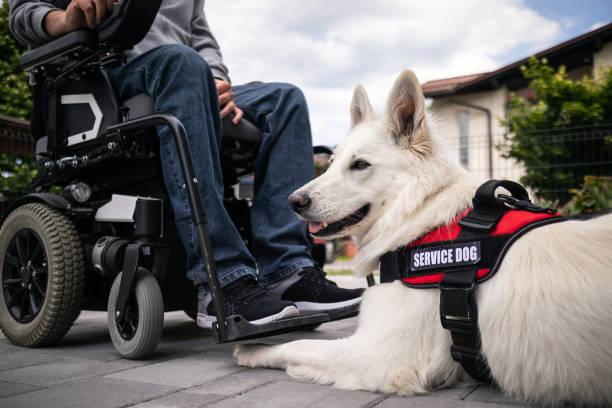
Although they’re not the same as therapy dogs, service dogs are something else entirely.
*The ADA does not protect therapy dogs, sometimes known as emotional support animals.
Service Animals and Emotional Support Animals, ADA National Network, 2014. They therefore lack the same rights as their owners to join them in restricted public areas unless prior authorization is granted. To offer some constructive comfort treatment, the therapy pet needs to be welcomed onto the property.
It is commonly recognized that therapy dogs can help with a variety of mental health issues and psychiatric problems.Interaction with therapy dogs and other companion animals is beneficial for patients with a variety of diagnoses, including depression, bipolar disorder, autism, ADHD, post-traumatic stress disorder (PTSD), and Alzheimer’s disease.
Therapy dogs can also assist with physical health issues that may be the cause of emotional difficulties. Empirical evidence indicates that individuals undergoing animal-assisted therapy may experience reduced pain during their convalescence following challenging surgery or a severe accident. According to studies, these connections can lower the stress hormone cortisol and raise the hormone that improves mood, oxytocin.
With a little instruction, any amiable breed of dog can become a therapy dog. Larger breeds are frequently utilized as therapy dogs, including Labradors, St. Bernards, standard poodles, and golden retrievers. On the other hand, when the patient and the dog are sharing a confined space, smaller breeds like Pomeranians and micro poodles make sense.
Although the breed may have some influence on the dog’s pleasant nature, the dog’s upbringing and even temperament development play a major role. Dogs are evaluated and studied for how they react to various stimuli, including unexpected grabs, loud or confusing noises, and even equipment like wheelchairs or canes, before they are approved as therapy animals.
Many internet directories are available if you would want additional information about how to find a therapy dog to aid you or a loved one. To identify people and organizations in your area, search for “therapy dog” along with the name of your town or city online.
Do an internet search for “therapy dog training” along with the name of your town or city to find out what options are available if you’re interested in finding out more about training your dog to be a therapy dog or visiting nursing homes or other facilities with your pet. Or just contact the facility of your choice by phone or email to find out about their admission policy.
For more information about therapy or our Posh Dog Knee Brace you can contact us via our contact form or Facebook Page.
A smart environment can help you keep your dog safe and happy. Beyond simply caring for their animals, pet owners have numerous other duties. As a result, they might not spend as much time as they would like with their fur babies.
However, you want to be able to check on your pets even when they’re not with you because you’re a conscientious pet owner. You want to guarantee that their requirements are satisfied and that they are safe and comfortable.
Thankfully, technology provides you an opportunity to accomplish these things.
You may make sure that your pet gets the care they need even when you are not at home by using certain gadgets, such as climate-controlled cars, cloud-managed webcams, and automatic feeding.

A smart environment is one in which electronic equipment such as computers collaborate to improve human comfort.
Technically speaking, these devices need to complete certain activities on their own and function well even with little assistance from humans.
A smart environment for pet owners also includes utilizing technology to simplify the task of providing for their animals.
Technologies That Are Pet-Friendly
More often than not, fascinating new technologies are introduced in the market. These days, several of these technologies are being utilized to develop pet-focused solutions that enhance the lives of both pets and pet owners.
It is easy to forget when it is time for your pet to eat when you are overworked and occupied. Pet feeders with intelligence offer a solution to this issue.
You may program smart feeders to automatically administer pet food according to a schedule. Even when you are not there, you can still feed your pet on schedule, every day. Just remember to restock it as soon as the feeder runs empty.
Security isn’t the only use for home cameras. They can also be used to observe or check on activities within your house.
Having security cameras in your home gives you the ability to visually check on your pet’s whereabouts and activities.
For instance, you might think your pet has a flea problem when you are gone from home. You can use your home cameras to watch your pet from a distance in this scenario.
Consider purchasing natural flea repellents for your pet, such as essential oils, from a pharmacy before you leave for your house if your pet is always scratching and itching.
There are numerous choices for installing cameras. However, having as little physical equipment at home as feasible (apart from the cameras themselves) may be desirable if we are talking about a smart environment.
With cloud-managed cameras, you can monitor your pets more intently and spend less time on deployment and maintenance because you won’t need cumbersome infrastructure like servers and video storage.
It should be simple to set up these cameras with little equipment. When combined with fast internet, you can see your pets from a distance even when you’re away on business.
Using wearable technology, you can keep an eye on your pet as well.
With GPS trackers, you can monitor your pet’s location. Because these gadgets are small and light, you can discreetly fasten them to your pet’s collar.
There are GPS trackers that let you set up “safe zones” for your pet. Let’s say your pet goes beyond the bounds of the zone. The gadget can then warn you of your pet’s whereabouts by sending you an alert.
A fitness tracker is an additional wearable gadget. These gadgets can measure your pet’s heart rate, distance covered, and caloric expenditure.
While your pet is receiving therapy or medicine, fitness trackers can be a useful tool. Fitness trackers have alert features just like GPS trackers.
Fitness trackers can also be used to arrange for your pet’s veterinarian visit, medication schedule, or to remind you to give your pet dietary supplements like glucosamine, fish oil, or plant extracts and oral tinctures for dogs.
Pets want playtime and entertainment as well. They could get fidgety if you’re not around to play with them.
You can communicate with your pets even when you’re not there to do so thanks to toys that are remotely connected. Your pets can hear you as they play with these toys since some of them have cameras and others have audio.
Among these toys are remote-controlled ball launchers that toss balls for dogs to recover and interactive cubes, which are compact, cube-shaped cameras that are pet-friendly.
Pet owners frequently bring their animals along in their cars, particularly when making a quick trip to the grocery store or a drive-thru restaurant.
Leaving your pets inside the car, however, could be risky because they could suffocate or suffer from heat stroke if left alone for an extended amount of time.
These days, some cars come equipped with a climate control system. Pets may remain cool and have adequate ventilation thanks to this feature, which maintains the interior temperature even when the owner is outside the vehicle.
These days, technology plays a big role in daily life. A smart environment not only benefits humans, but it also keeps dogs safe and comfortable.
However, you shouldn’t rely solely on technology to take care of your pets. Device malfunctions and lost internet connections are also possible.
Interaction between humans and animals cannot be replaced by technology. It is still preferable than having no way to check on your pet while you are gone from home.
As technology advances, gadgets will get even more dependable and contribute to the development of a closer relationship between you and your pet.
If you are interested in a Posh Dog Knee Brace contact us via our contact page or visit our Facebook page.
One of the key causes of dogs’ passion of chasing other animals is their prey drive. Our veterinarians can offer guidance on prey drive and safe ways to handle your dog.
For many dogs, prey drive is an instinctive behavior. Unfortunately, prey drive can occasionally result in issues, mishaps, or damage to your dog or other animals.
If your canine companion is constantly chasing squirrels or sprinting after birds when you go for walks, check out our tips on prey drive and how to keep your dog safe.

Animals with a prey drive have a hunting urge that enables them to capture food. When many dogs play, such chasing a ball, tugging games, or ripping up plush toys, you may have witnessed this. We may provide them with a secure outlet for their prey drive by encouraging these behaviors in them.
Some canines are more troubled by prey drive than others. “My dog has a high prey drive” refers to a person’s dog’s propensity to chase and catch animals such as mice, squirrels, or farm animals.
Breeds including Greyhounds, Lurchers, Collies, and Terriers are frequently known to have high prey drives. But any breed of dog can exhibit high prey drive, so it’s critical to recognize the warning signs and provide your dog with training to help curb their chasing tendency.
When near animals, exercise strict control over canines. Allowing your dog to harm or kill a farm animal is illegal, and both you and your dog may face harsh consequences. In the event that your dog is uncomfortable among sheep or other animals, you can:
In the event that your dog escapes the leash or that a farm animal pursues you:
If you are interested in more information about our Posh Dog Knee Brace you can send us a message via our contact page or visit our Facebook Page.
Hi guys, this is Nikki Lead Veterinary Technician with Posh Dog Knee Braces, and today let’s discuss how many hours a day your dog should wear a knee brace. Now this also really depends on what we are treating. If we have a full CCL tear with meniscus involvement, I may suggest you use the brace more often than a patient with a partial tear.
Also, how much energy your dog has is a big factor on how many hours you really need to be using the brace. Some brace companies say wear the brace all day long, with no breaks. This can lead to a lot of problems initially, if you have not properly broken in the wearing time of your brace.
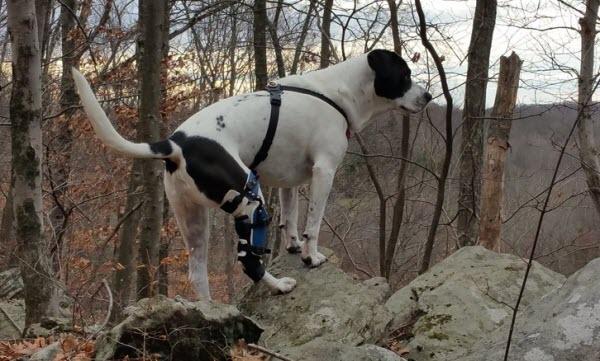
If you have a high energy dog, one that dives off of stairs and furniture, and is harder to control, you may be advised to use the brace a bit more. Now, we only suggest using braces during times that your dog is supervised. This is a medical device, and should not be worn without direct supervision. I would suggest starting out slow, just using the brace during walks and activities hours your veterinary technician will go over with you. Once your dog has been using the brace well, and you feel more confident, you can begin to increase the amount of time (hours) your dog uses the brace.
I still like to give breaks during the day, especially if there is a time they like to lay down and nap. For instance, using the brace for 2 to 3 hours in the morning, while they get the wiggles out, go potty, walk, and breakfast is perfectly fine. You may then opt to remove the brace during lunchtime, as most dogs calm down around this time. Then, you can place the brace back on in the afternoon, and remove prior to going to bed. This is just a suggested scenario, but again you do need to continue monitoring them with the brace.
We do not suggest any patient to wear the brace 8-12 hours a day, as anything that is worn that long on human or dog can cause skin irritation.
If your dog is pretty chill, relaxed, and only really active outside (such as giant breeds), then I would suggest using the brace just for activities. These can include walks, car rides, when someone comes to visit, playing with another dog, stairs, ect. If they spend most of their time laying down, it would not be comfortable to leave a brace on all day long. Let them get cozy, but we will be suggesting some Physical therapy activities to help prevent atrophy.
Put a sign outside your door, this will help discourage people from ringing the doorbell or knocking. Most dogs react to hearing a knock and doorbell, so if we can cut back on those times that will really help with preventing re-injury. Instead, put your phone number on the sign, so they can text you if someone arrives to visit.
Always feel free to speak to your service veterinary technician with any questions, that is what we are here for! Thank you, and give your dog a big hug for us!
You can contact us via our contact page or visit our Facebook page for more information.
Let Your Dog Recover With Our Custom Dog Knee Brace!
We’ve Helped Dogs All Around The World, Now We Want To Help Yours…
The Posh Dog Knee Brace is a 100% custom Dog knee brace, hand made only for your Dog. We make our custom brace with no casting. Our state-of-the-art brace for Dogs is very durable, waterproof, sand proof, and easily adjustable by customers. Our Veterinary Technicians provide personal live video supervision of measuring, and fitting of your Dog ACL brace in the comfort of your own home.
Dogs can be prone to injuries related to various physical activities. Understanding the types of injuries associated with specific activities can help dog owners take preventive measures and seek appropriate veterinary care when needed. Here are common activity-related dog injuries:
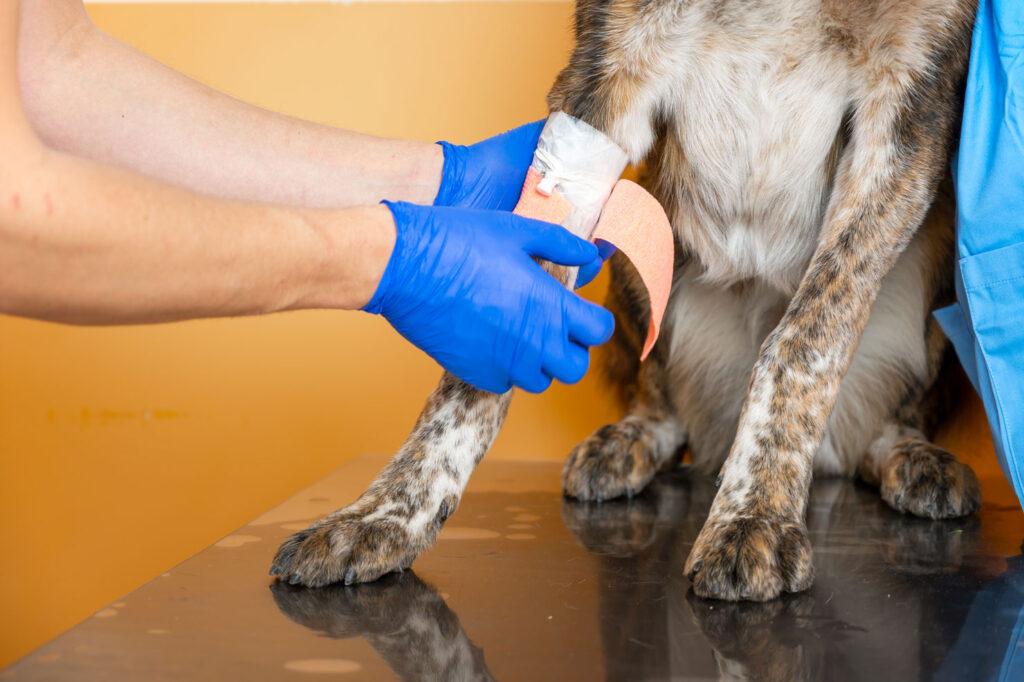
Preventing activity-related injuries involves being mindful of your dog’s limitations, ensuring they are adequately conditioned for the activity, and providing proper warm-up and cool-down periods. Regular veterinary check-ups can help detect and address any underlying health issues that might predispose a dog to injuries during physical activities. If an injury occurs, prompt veterinary attention is essential to ensure proper diagnosis and treatment.
For more information about related injuries or if you would like information about our brace contact us via our contact form or visit our Facebook page.
Teaching your dog to stop running out the door is essential for their safety and the safety of others. Here are some steps you can take to stop a dog from running out the door:
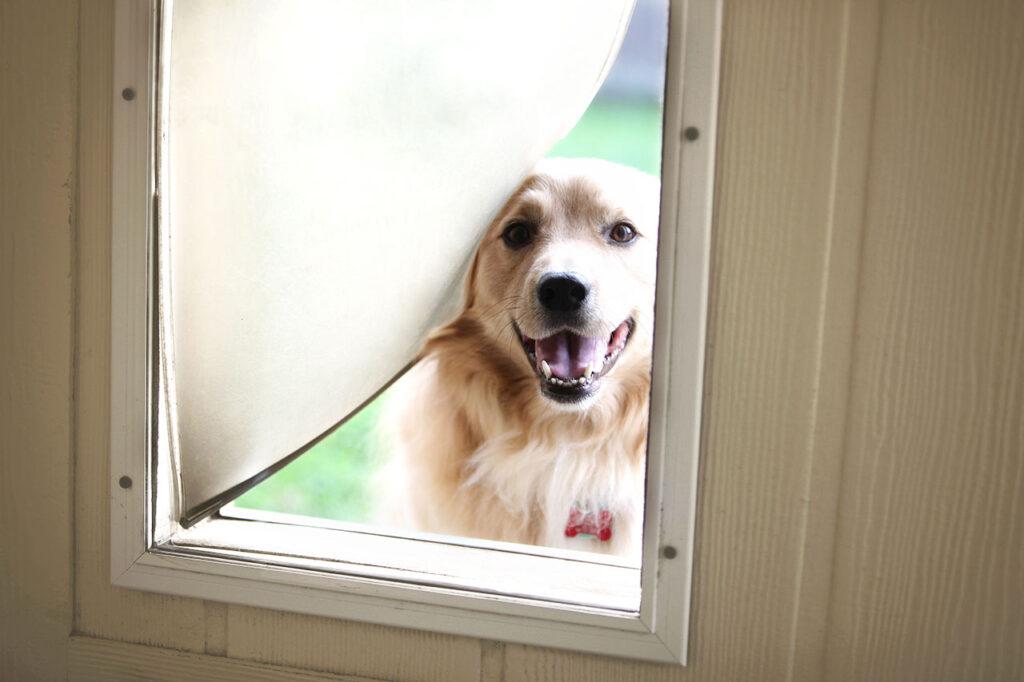
Remember that each dog is unique, and some may require more time and training than others to learn new behaviors. Positive reinforcement and patience are crucial in training your dog to stop running out the door. If you encounter challenges or your dog’s behavior does not improve, consider seeking guidance from a professional dog trainer or behaviorist for personalized assistance.
We a lot of different braces to help your dog recover from their injuries if you are intererested in learning more you can contact us via our contact page or visit our Facebook Page for more information.
Christmas gifts for dogs are great for several reasons:

1. Joyful Surprise: Dogs, like humans, appreciate surprises and new experiences. Christmas gifts can bring excitement and joy to their lives.
2. Bonding Opportunity: Choosing and giving a gift to your dog can strengthen the bond between pet and owner. It’s a shared experience that fosters a sense of connection.
3. Enrichment and Stimulation: Many dog gifts, such as interactive toys or puzzle feeders, provide mental and physical stimulation. These contribute to a dog’s overall well-being and happiness.
4. Seasonal Festivity: Including dogs in holiday celebrations adds a festive and inclusive atmosphere to the household. Special gifts make them feel like a part of the family’s joyous occasions.
5. Practical Benefits: Some Christmas gifts, like cozy beds or grooming tools, offer practical benefits by enhancing the dog’s comfort, health, or grooming routine.
6. Expressing Love and Care: Gifting a dog something special shows love and care. It’s a way for owners to express gratitude for the companionship and joy their furry friends bring to their lives.
7. Creating Memories: The act of giving and receiving gifts during the holiday season creates lasting memories. It becomes a part of the shared history between the dog and its family.
8. Fulfilling Needs: Christmas gifts can address specific needs or preferences of the dog, whether it’s a new chew toy, a cozy blanket, or tasty treats.
1. Personalized dog tags: Adds a personal touch while ensuring pet safety.
2. Interactive treat-dispensing toys: Keeps pets mentally stimulated and entertained.
3. Cozy pet bed with memory foam: Provides comfort and supports joint health.
4. Customized pet portrait: A unique and sentimental keepsake for pet parents.
5. Pet subscription box: Offers a variety of treats, toys, and accessories regularly.
6. GPS pet tracker: Ensures peace of mind by helping locate pets if they wander.
7. Pet-friendly spa day: A pampering experience for both pets and their owners.
8. High-quality pet food or treats: Shows care for the pet’s well-being and health.
9. Pet DNA testing kit: Provides insights into the pet’s breed and health history.
10. Stylish pet apparel: Adds a fun and fashionable element to pet ownership.
11. Pet camera with treat dispenser: Allows interaction and monitoring remotely.
12. Elevated food and water bowls: Enhances comfort and reduces strain on pets’ necks.
13. Pet grooming kit: Useful for regular grooming sessions, fostering a bond.
14. Pet-friendly puzzle games: Mental stimulation and a fun bonding activity.
15. Automatic pet feeder: Convenient for pet parents and ensures timely meals.
16. Pet-friendly holiday advent calendar: Adds excitement to holiday celebrations.
17. Pet massage or acupuncture session: Promotes relaxation and well-being.
18. Pet-friendly tech gadgets: Fun and innovative devices for tech-savvy pet parents.
19. Pet first aid kit: Essential for handling minor injuries or emergencies.
20. Comfy pet blanket or throw: Provides warmth and a cozy spot for pets.
21. Pet-friendly travel accessories: Useful for pet parents who love to travel with their companions.
22. Pet-friendly subscription service (e.g., toys, treats): A continuous supply of goodies.
23. Pet training classes or sessions: Enhances the bond between pets and owners.
24. Pet-friendly fitness tracker: Encourages an active lifestyle for both pets and owners.
In summary, Christmas gifts for dogs contribute to the overall well-being, happiness, and shared experiences between pets and their owners, making the holiday season more memorable and enjoyable for everyone involved.
If you were interested in one of our products or have questions you can contact us via our contact form or visit us on Facebook page.
Dogs are drawn to squeaky toys because of their natural instincts and behaviors, which the toys trigger and reinforce. There are several reasons why dogs are fond of squeaky toys:

There are various types of dog toys designed to cater to different play styles and preferences. Here are some common types:
It’s important to note that not all dogs are interested in squeaky toys, and individual preferences can vary. Additionally, some dogs may be overstimulated or become obsessive with squeaky toys, leading to potential behavior problems or compulsive chewing. As with any toy, it’s essential to supervise your dog while playing and ensure that the toy is safe and appropriate for their size and chewing habits.
If your dog enjoys squeaky toys, they can be a fun and engaging way to provide mental stimulation and interactive play. However, always consider your dog’s preferences, safety, and play style when choosing toys to keep them entertained and happy.
For more information about our Posh Dog Knee Brace you can contact us via or contact form or if you would like to follow us on Facebook click here.
The amount of exercise a dog needs can vary depending on factors such as their breed, age, size, and overall health. However, most dogs require a combination of physical and mental exercise to stay healthy and happy. Here are some general guidelines for the amount of exercise dogs need based on their life stage:

Puppies: Puppies have boundless energy and need frequent, short bursts of play and activity throughout the day. As they grow, their activity can gradually increase. Aim for a total of 30 minutes to 2 hours of exercise daily, spread across several short play sessions.
Adult Dogs: Adult dogs generally require around 30 minutes to 2 hours of exercise each day, depending on their breed and activity level. Breeds with high energy levels, such as Border Collies or Retrievers, may need closer to 1-2 hours of activity daily, while smaller or less active breeds may be content with 30 minutes to an hour.
Senior Dogs: Older dogs may have reduced energy levels and mobility, but they still benefit from regular exercise. Lighter and shorter exercise sessions are more appropriate for seniors, typically around 30 minutes per day. Keep in mind that senior dogs may need more frequent breaks and slower-paced walks.
In addition to physical exercise, mental stimulation is crucial for all dogs, regardless of age. Mental exercises, such as puzzle toys, training sessions, and interactive games, help keep their minds sharp and prevent boredom.
Remember that these are general guidelines, and individual dogs may have different needs. It’s essential to observe your dog’s behavior and adjust their exercise routine accordingly. Some signs that your dog may need more exercise include restlessness, excessive barking, destructive behavior, or weight gain. On the other hand, if your dog appears tired, lethargic, or is experiencing difficulty exercising, consider reducing the intensity or duration of their activities.
If you have any questions you can contact us via our contact page or visit our Facebook page for more information.
When preparing homemade dog food, it’s essential to include a balanced combination of ingredients that provide the necessary nutrients for your dog’s health and well-being. Here are three essential foods for dogs that you can incorporate into homemade dog food recipes:
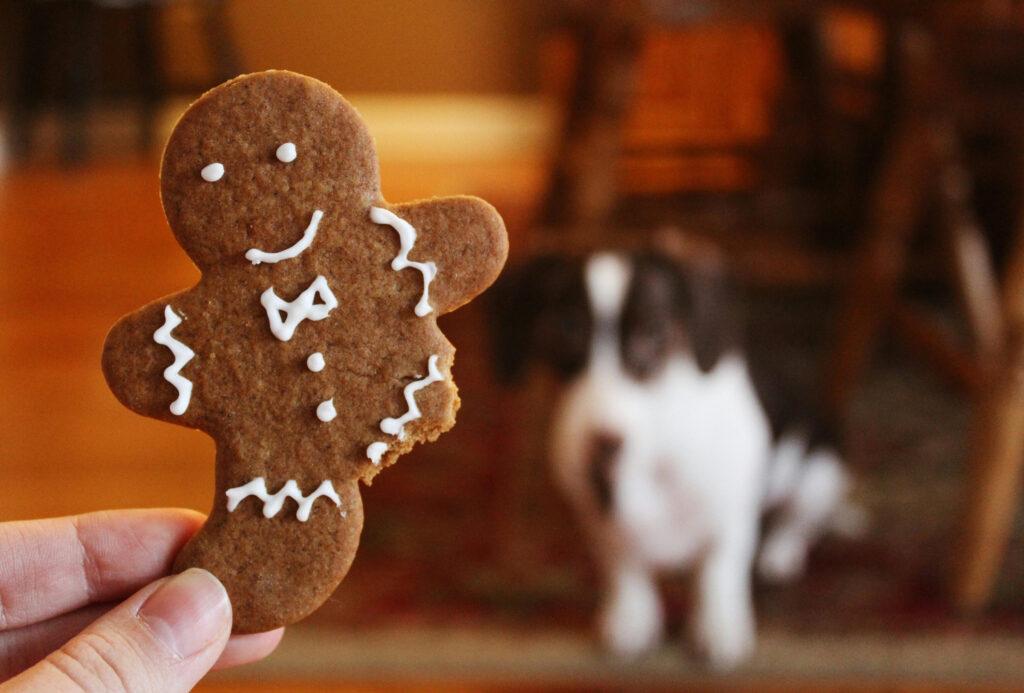
Always consult with your veterinarian to ensure that the homemade dog food recipe meets your dog’s specific nutritional requirements, taking into account their age, size, breed, and any health conditions they may have.
Keep in mind that homemade dog food should be properly balanced and varied to provide a complete and nutritionally adequate diet. A qualified veterinary nutritionist can help you create a balanced homemade diet plan tailored to your dog’s individual needs and preferences.
If you are interested in one of our products you can check out our Shopping Page, if you would like to join our Facebook page click here.
For dogs to maintain their physical and mental health, regular dog exercise is crucial. To avoid injuries, it’s important to select workouts that are suitable for your dog’s age, breed, size, and degree of fitness. The following canine workouts and injury prevention advice:
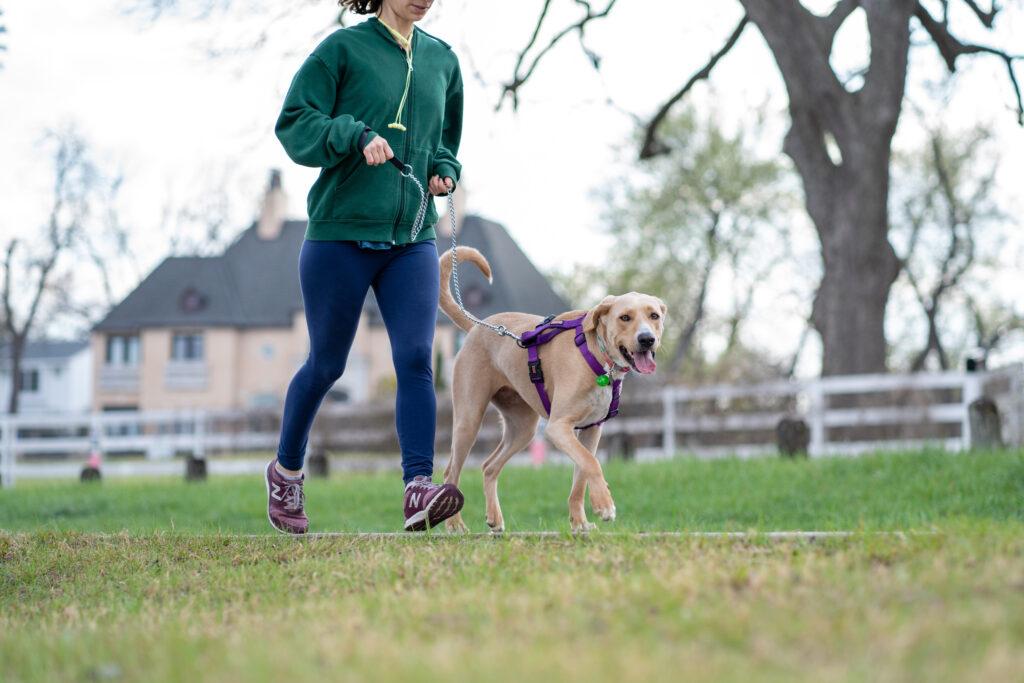
If you are interested in more information you can contact us via our contact page or visit our Facebook page.
When looking to buy therapeutic-quality essential oils for dogs, it’s essential to be cautious and choose products that are safe and suitable for canine use. Here are some tips to help you identify and purchase high-quality essential oils for your furry friend:
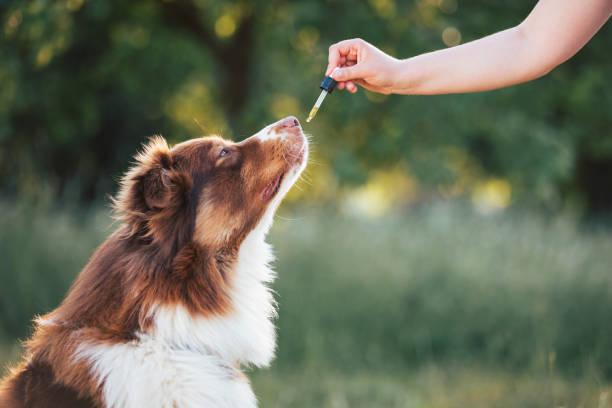
Remember that each dog is unique, and what works well for one dog may not be suitable for another. Always prioritize your dog’s safety and well-being, and seek professional advice if you have any doubts about using essential oils for your canine companion.
If you are interested in a Posh Dog Knee Brace you can contact us via our form or visit our Facebook Page.
Hey guys! Nikki, Lead Veterinary Technician with Posh Dog Knee Braces here. Let’s talk about the importance of pet insurance. I know I have touched on this before, but let’s explain the benefits, especially where orthopedics are concerned. If you asked me 2 years ago, I did not have my dog’s insured, and thought they were healthy, so it’s a waste of money right? Boy was I wrong. My very healthy 8 year old athletic dog went down suddenly, not wanting to get up or eat. I immediately took her to the emergency vet, where it was diagnosed she had a ruptured splenic tumor.
Let’s just say the bills from this visit were astronomical, and still I couldn’t save my dog. Now I am still paying off a bill for a dog that has been gone for over 2 years now. I can’t blame the vet, they did everything they could to save my girl. I can only blame myself, because I knew about insurance for her and still held off.

Now with my new girl Coco, we immediately got pet insurance. She has had cheat grass in her ears, tummy infections, and everything was covered. I would be another few thousand in debt if I did not have insurance on my girl.
Let me tell you about a family member’s dog. He developed a cough, which turned out to be the start of heart failure. To treat him for just 2 days, in order to get him stable to go home, was over $5,000. They were not ready to say goodbye to their fur baby, and of course put this on their credit card. They are now into their dog about $10,000. He is doing much better, but they will also be paying for his care many years after he has passed.
My insurance will cover up to 90%, leaving only $97 if I ever need a custom posh brace for Coco. Now that $35/month is sounding better and better I bet. Or, if your dog has any other orthopedic issues, such as luxating patella, shoulder issues, spinal issues, those are all covered.
I have another scenario that happened to a client’s dog. He was diagnosed with degenerative disc disease, common in daschunds and other small breeds, and one day could not walk on his hind legs. He needed emergency surgery, which was over $10,000, in order to walk again. Thankfully the owner had insurance, and was able to do the surgery with under $1k out of pocket. He went on to live another 5 years, running and playing like nothing happened.
So, I urge you, if you are on the fence about insurance, please take some time to call a few companies. There are many to choose from now, and most are very affordable. Much more affordable than a monthly credit card bill for treatments. Don’t let money ever be the reason to say goodbye to your best friend. Feel free to reach out to us if you would like some suggestions on companies that we know work with braces. Thanks!
You can contact us via our contact page or you can visit our Facebook page to talk to others who have used our brace.
Hey guys, this is Nikki Lead Veterinary Technician with Posh Dog Knee Braces. Today let’s talk about exercise in our cute little furry babies that we all love! Puppies are so cute, running around with those giant feet that don’t seem to match their bodies. Have you noticed how puppies tend to be very clumsy? Always falling over, tripping, slipping on hard surfaces? We think it is cute, but did you know there is a reason? Let’s talk about that today.
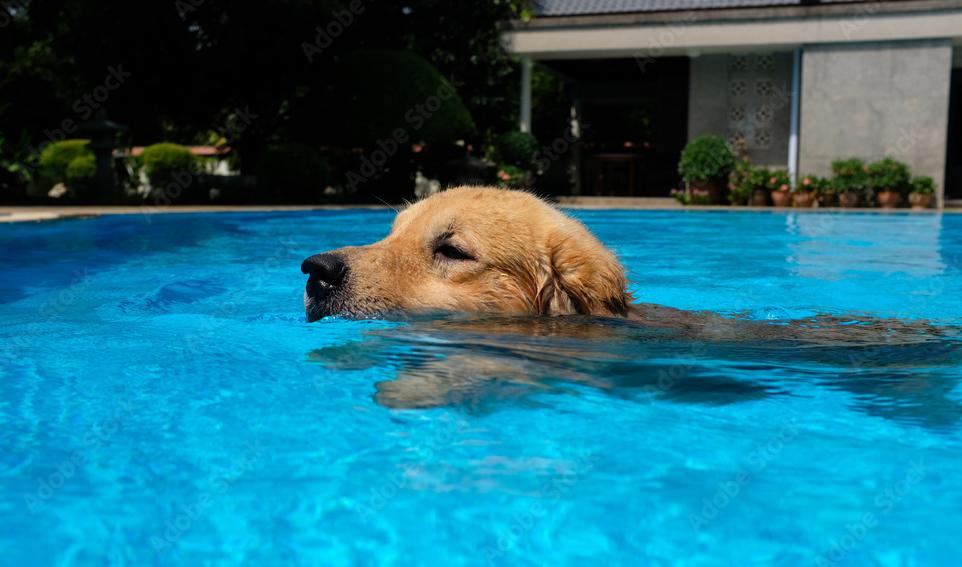
Did you know that a puppies bones do not even touch when you bring home that cute little 8 week old puppy? Their little joints are made of muscle, tendons, and ligaments with skin covering. Nothing is fitting tightly like a true socket. It can take 4-6 months for the joints to start developing, and 8 months and up for those growth plates to start to fuse. Some large breeds take 15+ months for their growth plates to finish. What does this mean?
This means that we have to be very careful as to not run a young dog excessively. This means restricting and supervising your puppy’s exercise, to stop them from being over-active. Each time they have a big jump, or an excessive run, this causes impacts between the bones. In a reasonable amount this is not a big deal, and is completely normal play. However, if you are letting your puppy jump up and down off furniture, taking them on long walks and hikes, you can potentially be damaging those forming joints, and this could cost you in the near future.
You see that puppy scrambling on the tile with no traction, and think it is a funny tik tok video, right? This is actually damaging their joints. Puppies need traction. Sliding into things, and scrambling, is not normal for a dog. Think about their wild ancestors, do you think their pups are walking on tile and sliding all the time? Nope! Neither should our pups. Every time that pup does the splits, you risk tearing the tendons in the hip. These can not be fixed.
There are far too many puppies having an FHO (where they have to remove the femoral head) due to slipping on surfaces. Either get your puppy toe grips, or have runners all over for them not to slip and slide.
You only have one chance to let your puppy grow in a healthy way. Once grown, you will have a lifetime to spend playing and engaging them, showing them, doing activities. So, keep it calm while they are still growing, engage them in fun safe activities. Taking them to puppy school is a great way to bond and get the wiggles out. Teach them commands and how to walk on a leash.
Puppies who are much to active have much higher chance of developing osteoarthritis, ligament tears like the CCL, patella issues, hip injuries and issues, and much more. I am not saying you can’t play with your puppy, but taking a 4 month old on a mountain hike is too much. Learn about what they should be developmentally doing at this age. Ask your Veterinarian or staff for help. Feel free to email us with any questions, we give free consults you can contact us via contact form on our website or visit our Facebook Page for more information.
Improve his life and yours with our custom crafted dog knee brace. It’s much more effective than a ready to wear or a soft dog ccl brace.Order yours today at Posh Dog Knee Brace or call us at 509-412-3065.